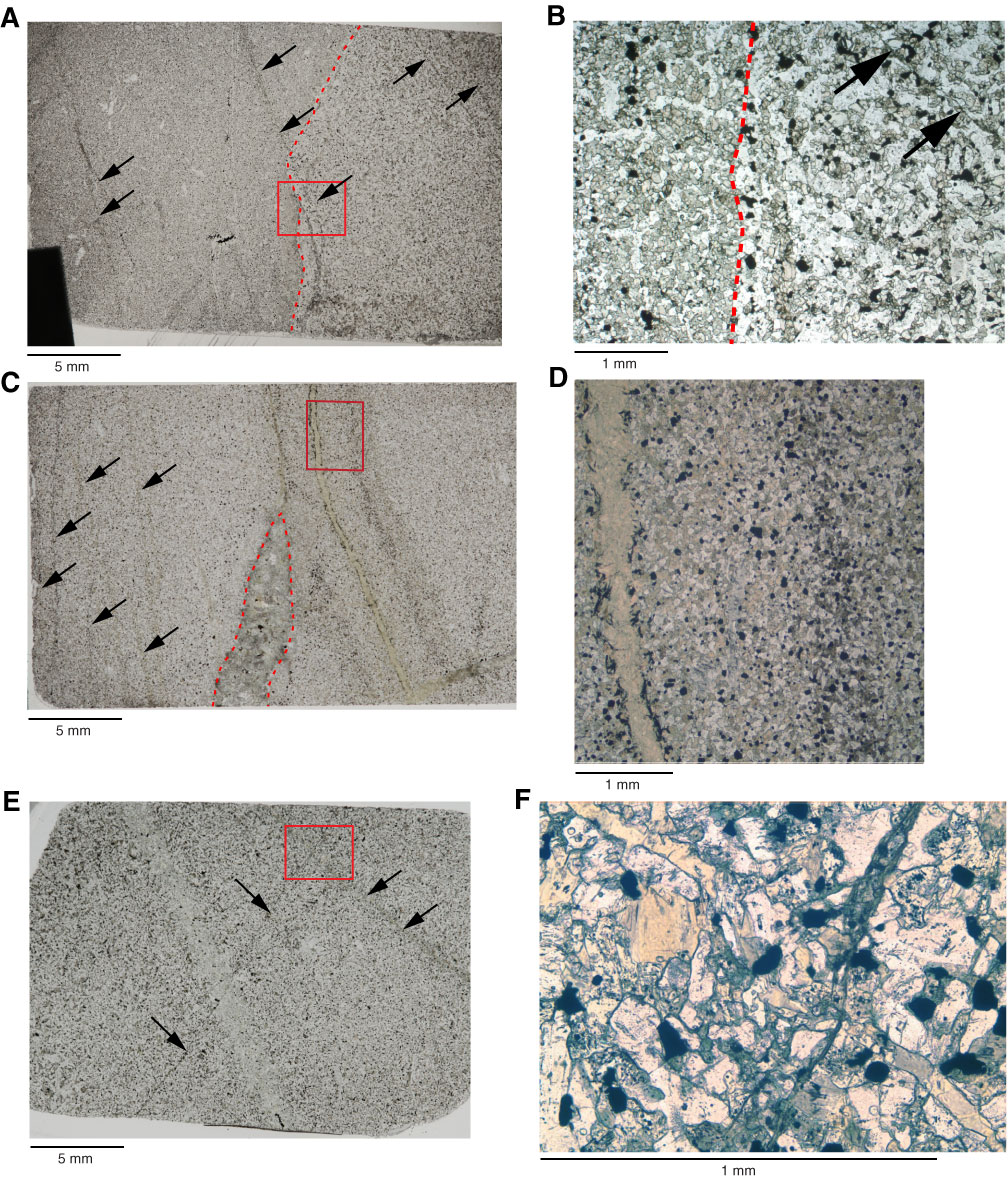
Figure F32. Photographs summarizing sequence of major alteration and metamorphic features in Expedition 335 cores and rocks. Intrusive dike contact in A represents original crustal construction processes. The darker gray, very fine grained dike at left in A is chilled against the lighter gray fine-grained dike at right (red line highlights contact). The lower sheeted dike complex was hydrothermally altered and subsequently intruded by gabbros and more evolved rocks, as exemplified in C, where diorite intrudes into a fine-grained dike (red dashed line). The host sheeted dikes were contact metamorphosed to granoblastic assemblages at this stage, as illustrated by the recrystallized dike contact in B. Former hydrothermal veins were recrystallized into granoblastic veins as in E, where a light gray vein of granoblastic plagioclase + orthopyroxene cuts diagonally across the sample. Two granoblastic orthopyroxene veins are also shown in B (subvertical at center and right). Following crystallization of the intrusive rocks and cooling, hydrothermal fluids penetrated and altered the rocks, cutting across all earlier features (intrusive igneous contacts and contact metamorphic effects in A–E). Red boxes in A, C, and E are localizations of the close-ups shown in B, D, and F, respectively. A, B. Fine amphibole veins (arrows) that cut across igneous/dike contact (Sample 335-1256D-Run12-RCJB-Rock S [Thin Section 26]). C. Fine amphibole veins (arrows) and thicker amphibole vein with amphibole-rich alteration halo (Sample 335-1256D-Run12-RCJB-Rock B [Thin Section 21]). D. Close-up (from C) of amphibole replacing pyroxenes along vein. E, F. Evolving hydrothermal activity, with dark greenish actinolite vein cutting across earlier light brown amphibole vein (Sample 335-1256D-238R-1, Piece 1 [Thin Section 6]).

Previous | Close | Next | Top of page